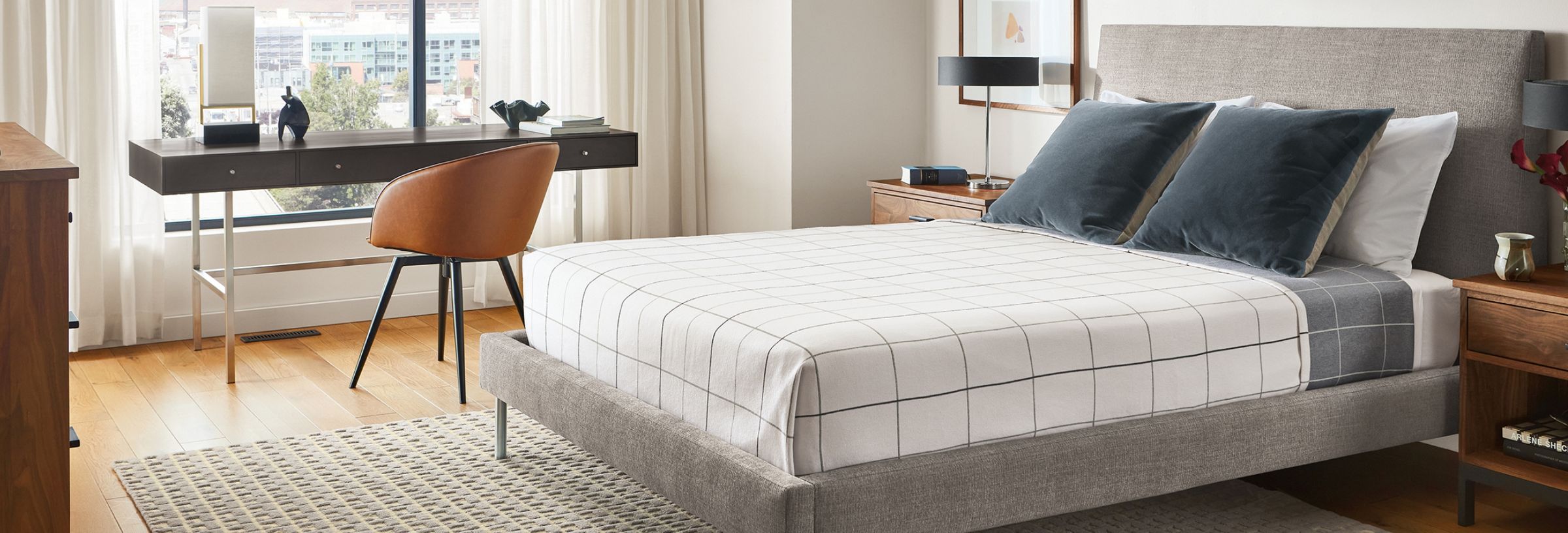All Categories
Featured
When embellishing a home, selecting the best furnishings design plays an important function in shaping the atmosphere of a space. Two of the most preferred furnishings styles are modern and conventional, each with its one-of-a-kind attributes.
Conventional Furniture: Standard furnishings embraces ornate layouts, intricate makings, and classic forms motivated by previous historical durations. This design is rich thoroughly, commonly featuring bent lines, rolled arms, and ornamental flourishes. Typical furniture has an official, innovative appearance, and the focus gets on great workmanship. Pieces often consist of elements like claw-foot legs, attractive moldings, and natural leather upholstery, producing a luxurious, timeless feeling in any type of room.
![]()
Conventional Furniture: Standard furnishings is recognized for its use of abundant, top notch products such as solid wood, leather, and natural fabrics. Pieces are frequently constructed from hardwoods like cherry, mahogany, or oak, which are carefully crafted to produce detailed information and surfaces. Conventional furnishings surfaces often tend to be dark and refined, providing items a sense of weight and deluxe. Upholstery often includes abundant textiles like silk, brocade, or velvet, which include to the opulence and comfort of conventional styles.
Typical Furniture: Traditional furnishings usually uses much deeper, richer shades that stimulate a feeling of warmth and elegance. Additionally, patterns are regularly used in standard furnishings, such as floral prints, red stripes, or damask, adding depth and structure to the room's design.
![]()
Standard Furnishings: While convenience is important in conventional furnishings, it is not constantly the primary focus. Traditional furniture highlights high-end and sophistication, usually including supported seats and thick furniture.
![]()
Typical Furnishings: Typical furniture often tends to stand apart extra in an area because of its classic and luxuriant layout aspects. It works well in more official settings, such as a traditional living-room, a research study, or a dining space. While it can be combined with contemporary elements for an upgraded look, conventional furnishings generally maintains its own identity and can really feel dominant within a room. This design commonly prospers in large, majestic rooms with a sense of splendour.
Traditional Furniture: Conventional furniture is constructed to last and never ever goes out of design. For property owners looking for sustaining, classic furnishings that maintains its value and elegance, typical pieces are a terrific investment.
Verdict. Ultimately, the option in between typical and contemporary furnishings comes down to your individual preferences and the type of atmosphere you want to create in your home. Contemporary furniture is smooth, functional, and versatile to present fads, while traditional furnishings is timeless, luxurious, and concentrated on elaborate information. By understanding the essential distinctions in between these two styles, you can better curate a home that reflects your taste, lifestyle, and the setting you prefer.
- Style and Forming. Contemporary Furniture: Contemporary furniture is understood for its streamlined, minimal styles that focus on simpleness and capability. Modern furniture can integrate aspects from various periods, making it extremely functional.
Conventional Furniture: Standard furnishings embraces ornate layouts, intricate makings, and classic forms motivated by previous historical durations. This design is rich thoroughly, commonly featuring bent lines, rolled arms, and ornamental flourishes. Typical furniture has an official, innovative appearance, and the focus gets on great workmanship. Pieces often consist of elements like claw-foot legs, attractive moldings, and natural leather upholstery, producing a luxurious, timeless feeling in any type of room.

- Products and Finishes. Contemporary Furniture: Contemporary furnishings utilizes a diverse series of materials, including wood, glass, steel, acrylic, and in some cases natural leather. The coatings are typically smooth and modern-day, with high gloss, matte, or even polished metal surfaces. While modern furnishings does consist of timber, the materials often tend to be lighter and much less luxuriant compared to traditional items. Steel accents, glass table tops, and also blended products are commonly located in contemporary furniture items, adding to a tidy, structured appearance.
Conventional Furniture: Standard furnishings is recognized for its use of abundant, top notch products such as solid wood, leather, and natural fabrics. Pieces are frequently constructed from hardwoods like cherry, mahogany, or oak, which are carefully crafted to produce detailed information and surfaces. Conventional furnishings surfaces often tend to be dark and refined, providing items a sense of weight and deluxe. Upholstery often includes abundant textiles like silk, brocade, or velvet, which include to the opulence and comfort of conventional styles.
- Color Palette. Contemporary Furniture: Contemporary furnishings welcomes neutral, downplayed shades, with tones like white, gray, black, and beige typically featured. The shade palette in contemporary furniture is commonly maintained straightforward to permit various other style aspects to beam, producing a well balanced and cohesive space.
Typical Furniture: Traditional furnishings usually uses much deeper, richer shades that stimulate a feeling of warmth and elegance. Additionally, patterns are regularly used in standard furnishings, such as floral prints, red stripes, or damask, adding depth and structure to the room's design.
- Comfort and Capability. Contemporary Furnishings: Capability is a main component of contemporary furnishings. Contemporary furnishings likewise often tends to have less decoration, which permits it to blend flawlessly right into numerous kinds of areas without subduing the area.

Standard Furnishings: While convenience is important in conventional furnishings, it is not constantly the primary focus. Traditional furniture highlights high-end and sophistication, usually including supported seats and thick furniture.
- Design Combination. Contemporary Furnishings: Contemporary furnishings is developed to fit with the trends of the moment, and because of this, it works well in minimal and modern-day areas. It blends easily with a selection of indoor layout styles, from mid-century contemporary to industrial and Scandinavian. Because modern furniture accepts simpleness, it can additionally be integrated with even more conventional pieces to create a diverse appearance. Its flexibility permits it to function well in open-plan formats and more portable living spaces.

Typical Furnishings: Typical furniture often tends to stand apart extra in an area because of its classic and luxuriant layout aspects. It works well in more official settings, such as a traditional living-room, a research study, or a dining space. While it can be combined with contemporary elements for an upgraded look, conventional furnishings generally maintains its own identity and can really feel dominant within a room. This design commonly prospers in large, majestic rooms with a sense of splendour.
- Longevity and Timelessness. Contemporary Furniture: Contemporary furnishings, as a result of its link to existing design patterns, can often really feel dated as patterns develop. Nonetheless, its clean, minimal visual and use of high-quality products usually guarantee it remains appropriate for numerous years, specifically when it concentrates on timeless modernist aspects. While modern furniture may not have the exact same historical weight as standard pieces, it can still stand the examination of time with its convenience and ongoing adaptation to brand-new trends.
Traditional Furniture: Conventional furniture is constructed to last and never ever goes out of design. For property owners looking for sustaining, classic furnishings that maintains its value and elegance, typical pieces are a terrific investment.
Verdict. Ultimately, the option in between typical and contemporary furnishings comes down to your individual preferences and the type of atmosphere you want to create in your home. Contemporary furniture is smooth, functional, and versatile to present fads, while traditional furnishings is timeless, luxurious, and concentrated on elaborate information. By understanding the essential distinctions in between these two styles, you can better curate a home that reflects your taste, lifestyle, and the setting you prefer.
Latest Posts
Specialist Commercial Roofing Solutions in North Platte, Nebraska
Published en
2 min read
Find Affordable Auto Repairs with Montclare’s Limited-Time Service Specials
Published en
1 min read
Boost Your Home's Exterior with Weathercraft's Home siding Solutions
Published en
1 min read
More
Latest Posts
Specialist Commercial Roofing Solutions in North Platte, Nebraska
Published May 27, 25
2 min read
Find Affordable Auto Repairs with Montclare’s Limited-Time Service Specials
Published May 26, 25
1 min read
Boost Your Home's Exterior with Weathercraft's Home siding Solutions
Published May 25, 25
1 min read